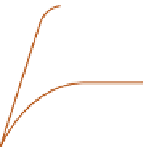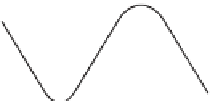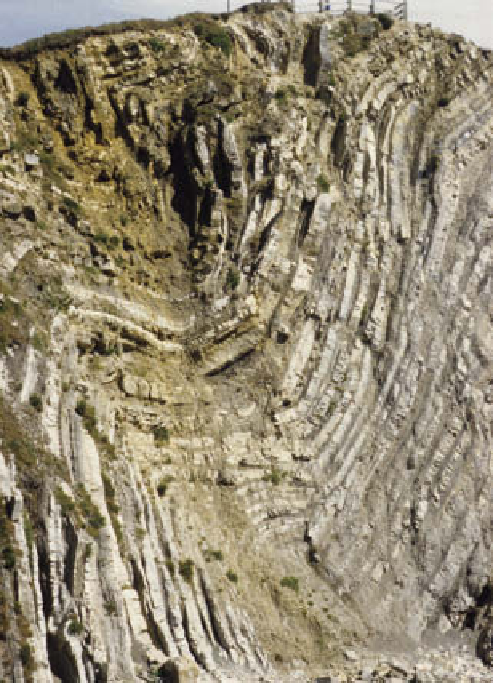Geoscience Reference
In-Depth Information
Figure 12.22
Styles of rock deformation and
folding: (a) stress-strain
relationships, (b) the
terminology of simple folds,
(c) types of fold, showing
increasing deformation to the
right.
(a)
(b)
Strike
Brittle failure
Elastic
Dip
Ductile
Plastic
Anticline
Strain
J
Syncline
(c)
Symmetric
Overturned
Thrust
(nappe)
Asymmetric
Recumbent
exploited by denudation. Foliation is a form of low-grade
metamorphism. Folding, by comparison, represents a
shortening of rock mass in the direction of compression
and corresponding extension at right angles (see
Figure
difference between folds and faults. Rocks, well folded past
the vertical, assume a recumbent form, but shortening
does not stop there. The upper limb continues to deform
by faulting in the thrust direction against the lower limb.
In continental collision, slivers of cratonic basement may
be thrust forward in this way. However, displacement may
occur along a
décollement
or detachment surface instead,
requiring - or creating - a zone of significant change
in material properties, rather than a fault
sensu stricto
.
Such low-angled surfaces may also generate tectonic-
scale gravity sliding in the opposite direction. The Alpine
thrust zone (see
Figure 24.10
),
Canadian Rockies and
Appalachians show nappe/
décollement
structures and the
basin-range system of the south-western United States
exemplifies gravity sliding (see
Figure 24.8
).
Deformation
is also associated with
diapirism
, forcing overlying rock
into a dome intruded by less dense magma (hot) or salt
and mud (cold) diapirs.
Brittle failure fractures rock without disturbing the
intervening rock mass, at a strain rate and magnitude
which exceed its intact strength.
Joints
are incipient faults,
generally restricted to individual facies, and occur initially
in response to contraction brought about by cooling
(igneous) and dewatering (sedimentary) processes.
Faults
are joints with differential movement on opposite sides
Plate 12.12
Acute and vertical folds in Jurassic strata
exposed by marine erosion at Lulworth Cove, Dorset.
original, horizontal bedding-plane length.
Photo: Ken Addison










































































